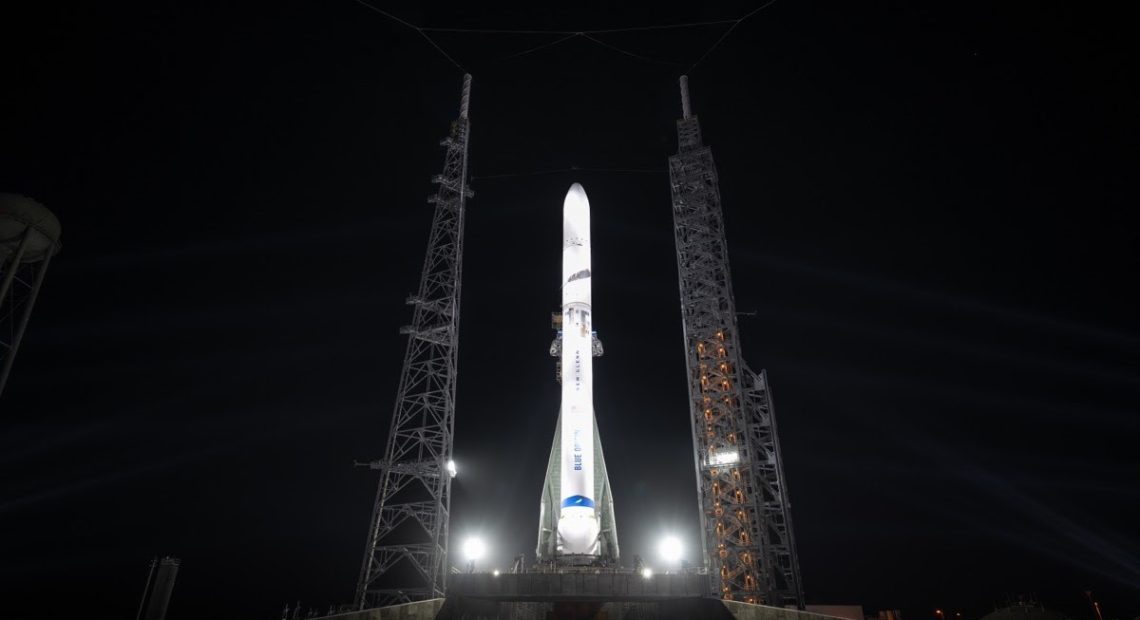Blue Origin unveils New Glenn rocket on launch pad

Vehicle set for maiden launch later this year
In a significant milestone, Blue Origin’s New Glenn vehicle made its inaugural appearance as it rolled out and upended at Launch Complex 36 (LC-36) at Cape Canaveral Space Force Station in Florida on February 21, 2024.
This marks the first public glimpse of the advanced heavy-lift vehicle. It is poised to support a range of customer missions and contribute to Blue Origin programmes, including its involvement in NASA’s Artemis programme to return to the Moon.
Blue Origin is an American aerospace manufacturer, defence contractor, launch service provider and space technologies company founded by Jeff Bezos.
All components on the pad are genuine New Glenn hardware, and this upending event is part of a series of crucial manufacturing and integrated test milestones leading up to the vehicle’s maiden launch later this year.
The comprehensive test campaign allows teams to hone their skills in vehicle integration, transport, ground support, and launch operations. Notably, these tests exclude engines, as they are undergoing hot firing at the 4670 Test Stand in Huntsville and Launch Site One in West Texas.
The journey to this point began in December 2023 when New Glenn’s first-stage modules were transported from the factory to the integration facility, spanning nine miles.
Test phases
The ongoing tests will wrap up in the coming weeks, featuring demonstrations of cryogenic fluid loading, pressure control, and evaluations of the vehicle’s venting systems. The launch pad and ground systems, now complete, are set to be activated for the first time during this test campaign.
Named in honour of John Glenn, the first American to orbit Earth, New Glenn stands impressively tall at over 98 metres, roughly equivalent to the height of a 30-storey building.
The rocket boasts a seven-metre payload fairing, providing twice the volume of standard five-metre commercial launch systems. This fairing is spacious enough to accommodate three school buses.
With a reusable first stage targeting a minimum of 25 missions, the rocket will land on a sea-based platform approximately 1,000 km downrange, embodying the core principle of reusability to reduce cost-per-launch significantly.
Seven of Blue Origin’s BE-4 engines fuel the vehicle’s power, recognised as the most potent liquid oxygen (LOX) / liquefied natural gas (LNG) engines developed since the Saturn V’s F1 engines.
Notably, being cleaner-burning and higher-performing than kerosene-based fuels, LNG positions New Glenn as a state-of-the-art and environmentally conscious launch vehicle.
Blue Origin is progressing in producing several new Glenn vehicles and boasts a robust customer manifest, including NASA, Project Kuiper, Telesat, and Eutelsat.
The company is in the process of certifying New Glenn with the US Space Force for the National Security Space Launch programme, aligning with emerging national security objectives of the United States.
Blue Origin is headquartered in Kent, Washington, United States.
Featured image: New Glenn is named in honour of John Glenn, the first American to orbit Earth. Image: Blue Origin













